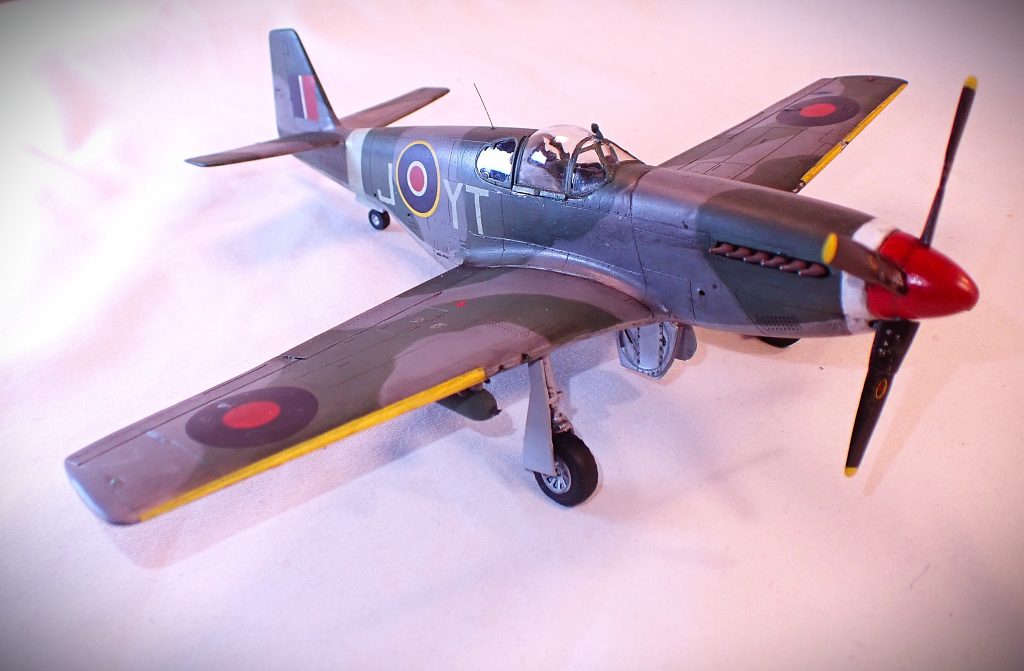The initial batch of Mustangs for the UK, the Mustang I, was the production model of the North American Aircraft NA-73X designed by NAA specifically for the RAF in cooperation with British engineers and Air Ministry specifications. The prototype had been rolled out in September 1940 and flew in October. It retained the Allison V-1710-39 engine without supercharger and was armed with six Browning, two in the nose and four in the wings.
The Ministry of Aircraft Production had already ordered 320 NA-73 with a further 300 NA-83 ordered in September. Production began immediately and the first Mustangs were delivered in October 1941, becoming operational in January 1942. At first, the RAF used the type for reconnaissance and ground attack roles under the command of Army Co-operation as opposed to Fighter Command due to its poor performance at higher altitudes, a severe disadvantage of the Allison V-1710 engine. When Lend Lease came into effect in March 1941 the Mustangs supplied remained on the US books and were redesignated P-51 by NAA. A further 93 P-51s, identical to the NA-83 but with nose guns removed and four Hispano 20mm cannon, two per wing, were supplied and named the Mustang Ia by the RAF with another 50 of the P-51A with a more powerful Allison V-1710-81 engine being supplied in mid-1942 and designated as the Mustang II by the RAF.
In May 1942 a project called the Mustang X came into being with experiments to fit a Rolls-Royce Merlin 61 to the Mustang airframe. In the end the Merlin 65 series was used with two speed supercharger giving increases in altitude and speed. Tests were completed by October and proved that the performance was substantially better with operational ceiling way above that of the Allison. A contract was issued for Packard to replicate the Merlin in the V-1650-3 engine. Two NAA Merlin prototypes were ordered and became known as the XP-51B with a top speed of 441mph and service ceiling of 42,000 ft. The centre of gravity was affected with the heavier engine and slightly longer forward section, so the wings were moved forward. This also allowed for a central fuel tank to be fitted behind the cockpit vastly improving range. The carburettor intake was moved to below the nose with the four .50 Browning being retained. Hard points allowed for external bombs up to 2,000lb or 8 rockets or drop tanks depending on the type of mission.
The Packard Merlin version flew in November 1942, and production began in June 1943. The P-51B produced at Inglewood, California, and the identical P-51C produced in Dallas. The RAF designated it the Mustang III with 308 P-51B and 636 P-51C being delivered between late 1943 to mid-1944. Initial batches had the birdcage canopy with opening side, but most were fitted with the new one-piece sliding canopy allowing increased vision. Most squadrons converted to the Mustang III, but some retained their Mustang I and IIs. The Mustang III remained in service with the RAF until the end of the war. With the increase in altitude and range the RAF Mustangs could now be used for escort and fighter cover with great effect.
There are no surviving RAF Mustang III anywhere. There are three P-51B and five P-51C in the USA in airworthy condition.
